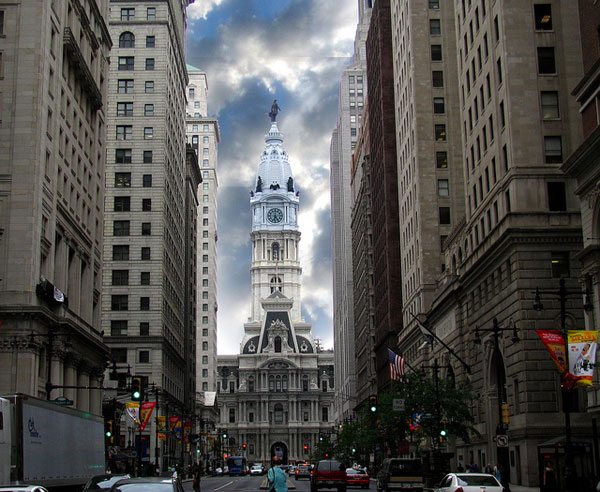
November 25, 2017; Philadelphia
As Malcolm Burnley highlights in Philadelphia magazine, many Philadelphia nonprofits face perilous times, as 40 percent skirt close to the financial edge.
Burnley’s observation is based on a report commissioned by the Philadelphia Foundation and coauthored by GuideStar, Oliver Wyman, and SeaChange Capital Partners titled “The Financial Health of Philadelphia-Area Nonprofits.” We at NPQ say the report provides a “window into challenges that face nonprofits everywhere.” For that reason, we reprinted the report in full earlier this month. But while the report touches on universal themes—among them, the need for nonprofits to build reserves, the importance of contingency planning by nonprofit executives and boards, and the need for funders to support nonprofit overhead—its natural focus was on findings specific to Philadelphia nonprofits.
The report finds strength for Philadelphia nonprofits in some areas. For example, Form 990 filings show that area nonprofit assets exceeded $16 billion in 2014, $5 billion more than seven years before (a 27 percent increase, even after adjusting for inflation). Still, the financial data for many area nonprofits remain troubling. Two key findings:
- More than 40 percent of Philadelphia nonprofits are running at a loss or producing no surplus funds at all.
- Around seven percent of the region’s nonprofits are insolvent, which means their liabilities exceed their assets, and for health and human services organizations, that rate is 13 percent.
While the report is more upbeat about the sector overall, this optimism does not extend to the two fifths of Philadelphia nonprofits that are struggling. As report co-author John MacIntosh says to Burnley: “I would argue that most of these [40 percent] are so busy scrambling to keep the lights on, it’s hard enough for them to deliver good programming on a day-in, day-out basis, let alone survive the inevitable shock of what will come down the pike.”
Burnley adds,
To get ahead of the coming challenges, in 2015 a team of nine funders, including the region’s largest funder, the William Penn Foundation, launched the Greater Philadelphia Nonprofit Repositioning Fund. The fund’s mission is to support partnerships and collaborations among nonprofits to foster financial sustainability in the region. Getting there will necessitate difficult conversations, including the possibility of responsible mergers between organizations.
“It’s never been harder for nonprofits to fundraise,” says Nadya Shmavonian, director of the fund. “We hope to strengthen nonprofits’ ability to deliver their services through wise collaboration.”
Sign up for our free newsletters
Subscribe to NPQ's newsletters to have our top stories delivered directly to your inbox.
By signing up, you agree to our privacy policy and terms of use, and to receive messages from NPQ and our partners.
Last month, Albert Hong picked up on this theme in Generocity. As Hong summarized, “Sometimes the right answer to take that mission forward is to move the organizational boundaries, to consolidate with somebody else, even to dissolve in an orderly way while you still have the time and capacity to make wise choices rather than hitting a wall, leaving the people you serve, your employees and even your board members in the lurch.”
Much of Burnley’s article, however, focuses on how to escape the dilemma through fundraising. Or, as Don Kligerman, founder of Fairmount Ventures, a Philadelphia-based consulting firm, puts it, increasing supply. Burnley asks, “How is it that Philly—a city with deep Quaker roots and a nickname that practically drips with generosity—is home to a philanthropic sector that appears very much on the brink?”
As Burnley notes, Philadelphia “ranks remarkably low in dishing out tax-deductible donations.” An October 2017 report ranked Philadelphia at 43rd in percentage of donations out of America’s 50 biggest metros. Burnley faults the relocation of The Annenberg Foundation to Los Angeles and a shift in focus of the Pew Charitable Trusts to national issues for weakening local philanthropy. That said, Burnley acknowledges that “of greater long-term consequence has been the impact of white flight and concentrated poverty…As a general rule, rich enclaves invest less money in nonprofits and charities than rich individuals living within economically diverse areas.” For example, Burnley notes that suburban Bucks County has a giving rate of only 1.9 percent, compared to a state average of 2.6 percent.
One can speculate as to what could increase Philadelphia giving. Perhaps it would be possible to tap into civic spirit in the City of Brotherly Love and increase local giving, as Burnley suggests. Yet, as Burnley himself notes, “Donations have held steady at two percent of America’s gross domestic product, wavering no more than a few tenths of a percent in boom time or recession.” For his part, MacIntosh contends that, “There’s absolutely no evidence over the last 50 years that philanthropy grows just because not-for-profits are better at asking. It just moves around.”
A more fundamental challenge is Burnley’s failure to consider non-donation sources of revenue. For the nonprofit sector as a whole, donations are 21 percent of revenues. Even when one looks solely at human service nonprofits, a 2008 survey found that “about 25 percent of total revenue…came from fees for service from private sources and 24 percent from government sources. Private contributions made up roughly 13 percent. Another seven percent of revenue came from government grants.” Of course, without program revenue, Philadelphia’s nonprofit sector would be a sliver of what exists today.
The importance of government revenue was not lost in the original report, however. Indeed, the report’s authors observed that “a five percent reduction in government funding could push close to 20 percent of nonprofits from earning a surplus to a deficit and turn an additional five percent to insolvency in less than five years.”
In short, while no one would deny the desirability of increased local giving, those seeking to revive civic spirit in Philadelphia might also want to include an enhanced public sector in their plans.—Steve Dubb











